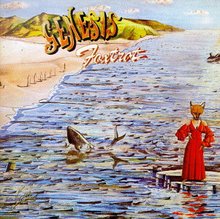 ....but considerably less than the one observed by a giant shrimp living on Australia's Great Barrier Reef which can see a world that is invisible to other animals according to a Swiss marine biologist and an Australian quantum physicist.
....but considerably less than the one observed by a giant shrimp living on Australia's Great Barrier Reef which can see a world that is invisible to other animals according to a Swiss marine biologist and an Australian quantum physicist.Dr Sonja Kleinlogel and Professor Andrew White have shown that mantis shrimp, dubbed "thumb splitters" by divers, not only have the ability to see colours from the ultraviolet through to the infrared, but have optimal polarisation vision so detecting many subtle variations in light.
Their independently moving eyes can view the world in up to 12 primary colours, four times as many as humans and can measure six different kinds of light polarization or the direction of oscillation in light waves.
Most animals can tell how fast the electric field in a light wave is oscillating, which is perceived as colour. (Blue light oscillates faster than green, which is faster than red). The direction of the oscillation is known as polarisation: many animals, from budgerigars to ants have some form of polarisation vision which it is believed to be used for navigation, for finding food and for evading hunters.
Commonly, polarisation vision is quite restricted: in its simplest form, different directions of polarisation show up as lighter or darker patches, you can see this yourself by looking at clear blue sky with polarising sunglasses. But polarisation is more subtle than this: the electric field of the light can oscillate back and forth in a line or around and around in a circle, or anywhere in between.
The research undertaken by the two scientists has shown that shrimp has eyes that simultaneously measure four linear and two circular polarisations, enabling them to determine both the direction of the oscillation, as well as how polarised the light is.
One has to wonder what complex form of environment would cause such an elaborate system of sight to evolve.
Apparently though it comes down to basic necessities. As Andrew White explained "Some of the animals they like to eat are transparent and quite hard to see in sea-water, except they're packed full of polarizing sugars. I suspect they light up like Christmas trees as far as these shrimp are concerned"
And once the food had been sorted out Dr Kleinlogel explained that whilst circular polarisation wasn’t exclusively used directly as a sex signal it seemed pretty clear that some pretty exotic flirtation was going on.
The other thing that occurred to me was wondering what a barbeque looked like in 12 primary colours when getting progressively closer to it?














7 comments:
Clever little creature.
Short break there Grendel, just couldn't resist sharing this, could you? Thanks.
How can it be a giant shrimp?
More seriously - are they tasty?
Ugggh. I can't touch seafood.
12 primary colours! A feat only achievable by humans with teh the use of psychedelic drugs. methinks! Fascinating post Grendel
Mmmm., they all go orange when cooked LOL.
You should be wary of 'coming the raw prawn' Grendel: your arm could very easily end up on the 'barbie', and your mother would not like that.
Post a Comment